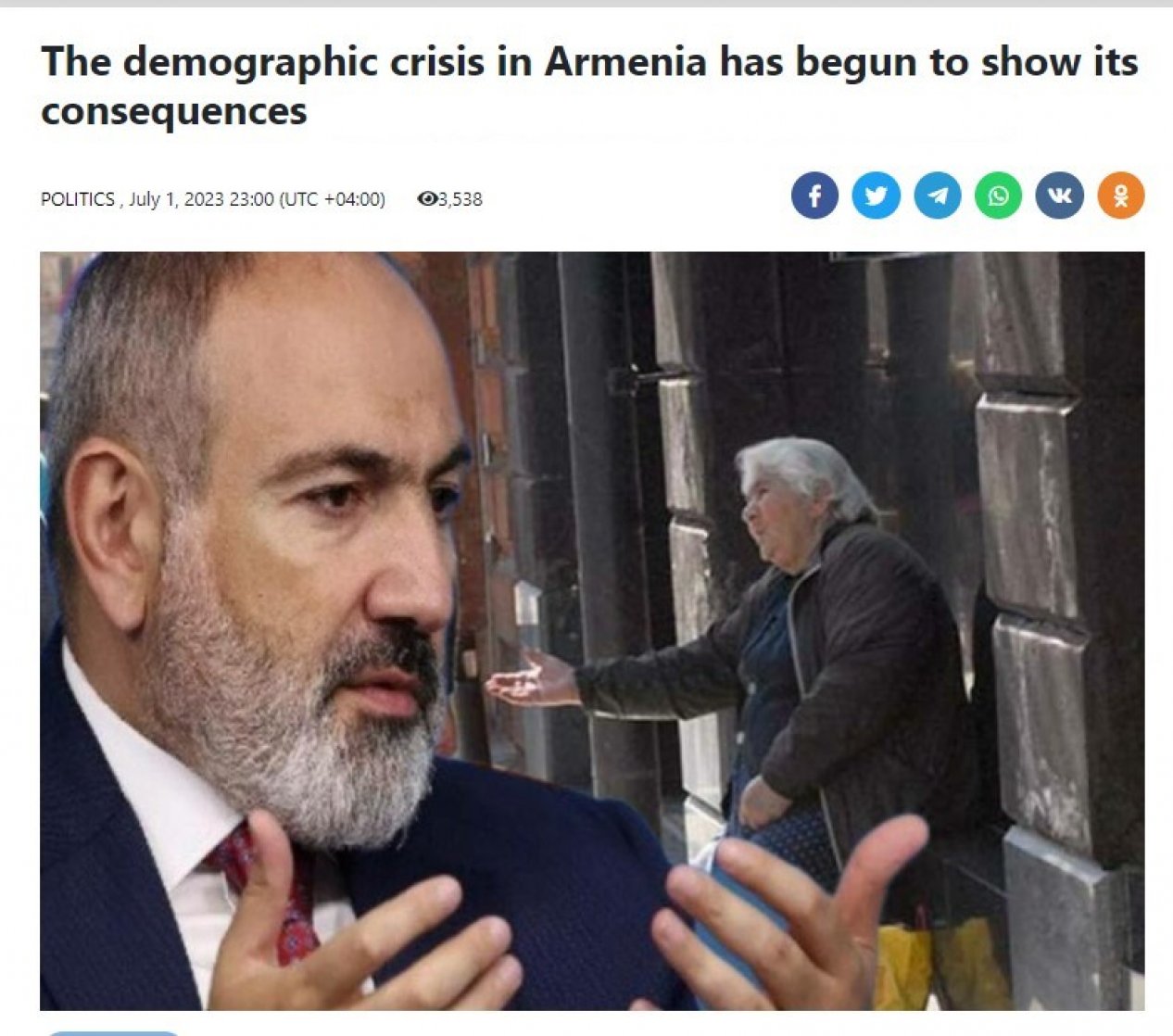
Prime Minister of Armenia Nikol Pashinyan highly appreciated his government's policy in the field of demography and said that successful results have been achieved. He noted that in January-August 2023, Armenia recorded the highest birth rate compared to the last five years. This is the result of government policy in the field of demography. Pashinyan considers the influx of people from Russia and other countries due to the war to Ukraine in the last two years a demographic success; publications close to the authorities are trying to create the impression of a reversal in natural population growth with promising figures. It is reported that as of July 1, 2023, the population of Armenia increased by 0.8% or by 23,200 people and reached 2.985 million people. source
Faktyoxla Lab. has checked whether this information is true.
Contrary to Pashinyan’s promising statement for the Armenians and statements about a successful demographic policy, official statistics in recent years, as well as an analysis of demographic indicators for the ninth month of 2023, show that the demographic balance has changed to negative.
The Armenian publication “168.zham” writes that the government’s numbers and promises are deceptive, although a temporary positive balance was created in the democratic balance due to arrivals from Russia and India last year, migration processes in the last months of 2023 strengthened the negative balance. In July-September of this year alone, the flow of people leaving the country exceeded the flow of people entering the country by approximately 29,000 people. The fact is that there are sharp discrepancies between the demographic indicators announced by the Pashinyan government and the figures of the International Population Fund and other reputable research organizations. For example, the Statistical Committee of Armenia presents a population of 2.985.1 million people for the period until July 1, 2023. link
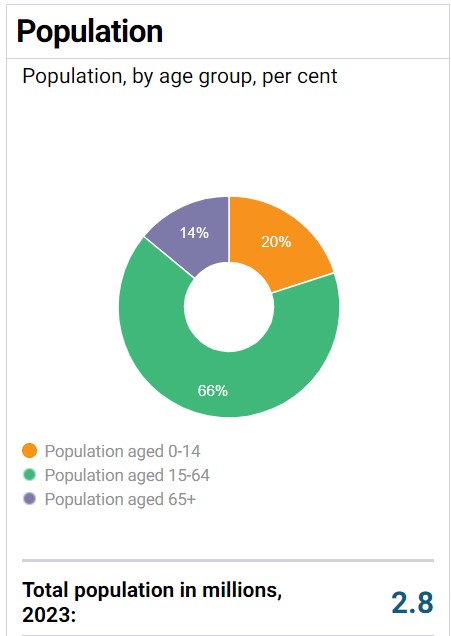
However, international reports indicate the population of Armenia at 2.7-2.8 million people. The latest report from the International Population Fund puts the population of Armenia in 2023 at 2.8 million. source
In the document “World Population Review 2023”, the population of Armenia is shown at 2.778 million people.

From the data of international organizations, it is clear that the statistical authorities of Armenia overestimate these figures by at least 200,000 people. Pashinyan’s government is trying to hide the difficult demographic situation in the country by deliberately exaggerating statistics and manipulating the hopelessness and despair of the population.
However, no matter how many manipulations he does, Armenian research centers and public organizations, representatives of civil society institutions say that the natural increase in the country has reached an unbearable limit. According to historian-demographer Mikhail Malkhasyan, the birth rate per adult woman is 1.7, although this figure should be at least 2.2: “This means that at some historical stage the number of births will be less than the number of deaths.”
Recalling that his country's population has declined over the years, Malkhasyan states that over the past 35 years, the population of Armenia has decreased by more than 1,200,000 people. After the collapse of the Soviet Union, the birth rate in Armenia steadily decreased, and already in 1993 it exceeded the minimum threshold. Large families no longer exist in this country. The expert associates one of the reasons for the decline in natural growth with shortcomings in the state’s economic policy. According to demographic research specialist Artur Tovmasyan, in the last 30 years, along with a sharp decline in the population of Armenia, the migration factor has aggravated it. In 1991-1994 alone, due to the Karabakh war and the economic and energy crisis, 500,000 people left the country.
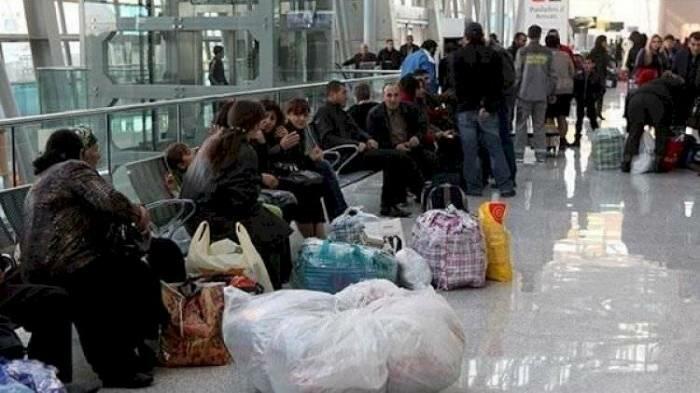
Criticizing the state policy in the field of family planning and demographic stimulation, according to Tovmasyan, the state does not create favorable conditions for young people to start a family and have children, does not implement stimulating and encouraging programs and is not interested in the institution of family: “It’s like a trap.” The state prevents parents from raising their children normally by burdening them with various taxes, does not help young people who study, but instead takes money from them with interest to pay for their education. Such factors also contribute to the fact that the institution of the family is failing in society.
“Moreover, the state considers citizens as a source of income, perfectly exploiting the attitude and love of parents for the child. They take money from them at interest to pay for education,” Tovmasyan noted.
According to a study by the Association of Sociologists of Armenia, immigration to the country has already become massive and is moving towards the process of devastation of the country. In the 20 years since Armenia gained independence, 1.200 million people have left the country. Over the past 10 years, the number of migrations has been increasing every year. In 2012, some 25,000 Armenians left the country for permanent residence abroad, and now this number is 35,500.
According to a sociological survey conducted in Yerevan, 46% of respondents said they wanted to immigrate. Those wishing to leave Armenia are mainly young people aged 30 years and younger. And this is a group of the population with reproductive potential.
Where are the Armenians going and why do they want to leave the country en masse?
Among the reasons in Armenia for migration abroad, the security situation in the region is not justified, as the government claims, the main reasons are unemployment, difficulties in obtaining a livelihood, political repression, restrictions on economic freedoms, narrowing the ability of people to earn an income, lack of free competition, lack of access to education, healthcare, social services, etc.
- 32% of those who migrated indicate unemployment as the main reason;
- 30% do not see further prospects in Armenia;
- 20% leave because they do not believe in the fairness of the government;
- 17% of migrants do not want to live in Armenia because they are on the verge of poverty.
(link)
The Armenia section of the Organization for Economic Co-operation and Development (OECD) report on migration issues around the world notes that the Republic of Armenia, with about 30% of the population living outside the country, has one of the highest emigration rates in the world. The OECD Development Center and the Caucasus Research Resource Center in a report on Armenia entitled “Public Policies, Migration and Development (IPPMD) in Armenia” on the emergence of migration points to the lack of availability of services for the population in key sectoral areas, such as the labor market, agriculture, education, investment and finance and other areas. People leave the country in hopes of finding these services in foreign countries.
According to a survey conducted among thousands of people and communities in several countries as part of a migration research project co-funded by the European Union, Armenia ranks in the same place as Burkina Faso, Cambodia, Costa Rica and Cote d’Ivoire. Countries ranked by migration situation include the Dominican Republic, Haiti, Morocco and the Philippines. source
In terms of the number of participants in the program called “Visas for Immigrants of Different Nationalities”, implemented by the US State Department, Armenia ranks first in the South Caucasus. Every year more than 56,000 Armenians apply to participate in this program. Armenian youth go to the US, European countries and other countries to build their future life and get a good education, to demonstrate their capabilities. And the increase in the number of Armenians applying for Green Cards and Schengen visas in recent years confirms this. Source
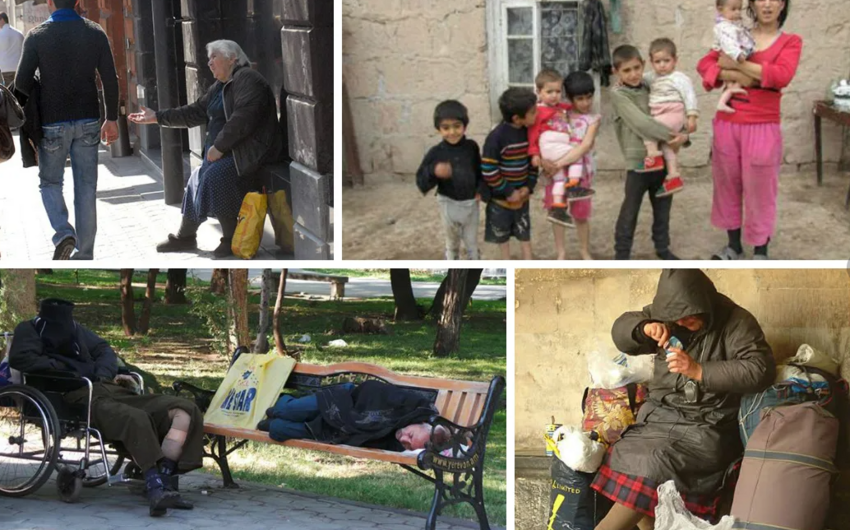
Armenians who have already moved from Karabakh to Armenia do not want to live in Yerevan and nearby cities, they are looking for ways to get out. They are making plans to flee abroad, citing the boredom of the socio-political, economic and social environment in the country, in exchange for a continuous flow of assistance and donations in the amount of $10 million from the US, Canada, France, Belgium. The Netherlands and other countries and organizations. More than 3,000 Armenians have already left Armenia, despite Nikol Pashinyan's appeal to them and his promises to create better opportunities.
Expert economist Hrant Mikaelyan also recognized this reality and reminded that the demographic situation in the republic is sad; the population of Armenia will decrease to 2.6 million people in the coming years. He believes that the results of the 44-day war will also affect the process of population decline in Armenia, and the results of the war will have a serious impact on the reduction of natural population growth in Armenia in the next 20 years. Reference
International reports and statistics show that the demographic situation in Armenia will worsen, and the decline resulting from the statistics of recent years will continue in the coming years. According to the World Population Review 2023, Armenia's population has declined from 3.1 million in 1988 to 2.8 million.
Currently, in many countries, the annual natural population growth is declining from the current 0.5% to minus 0.47%; Armenia is included in this risk group, and the negative demographic balance in this country is deepening.
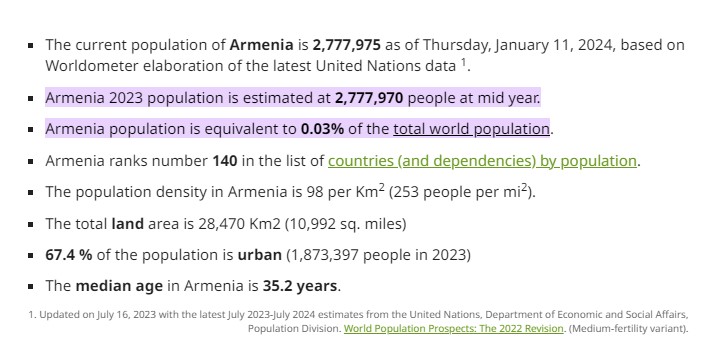
According to calculations by the UN Population Fund, in the next 20-30 years there will be a further decline in the planet's population, and Armenia will be one of the most affected countries. Anna Hovhannisyan, Program Coordinator of the Population Fund in Armenia, stated that by 2050 the population of Armenia will decrease to 2.6 million people. According to Hovhannisyan, even the programs prepared by the Armenian government to increase the birth rate will not change the situation for the better. According to her, the reasons for the decline in the birth rate in Armenia are socio-economic problems. According to some studies, people do not have as many children as they would like for a number of different reasons, such as lack of a well-paid job, the need to improve their living conditions and so on.
Armenian experts note with concern that in the near future the demographic crisis will deepen and the place of the Armenians who left Armenia will be taken by Arabs, Assyrians (Syrians) and other easily integrated peoples, and the number of Armenians in the country will drop.
As one can see, Nikol Pashinyan’s opinion about the positive change in natural population growth in Armenia and the influence of government policy in this matter is completely wrong.




















